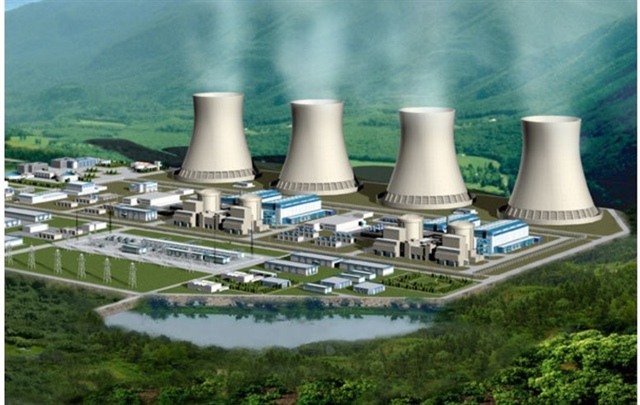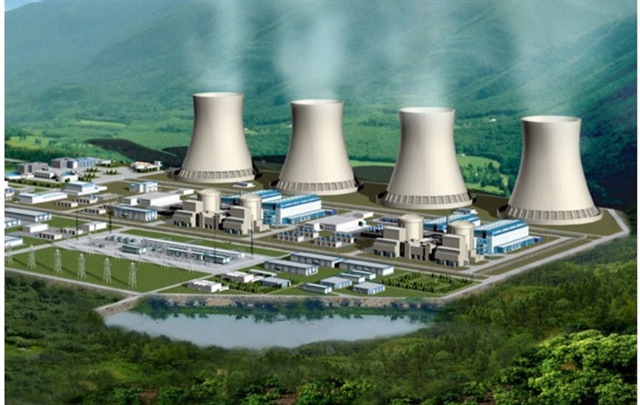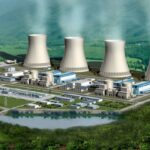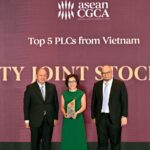Nuclear Power Development: A Historic Responsibility
In his recent presentation at the 2025 Annual Oil and Gas and Energy Forum, Mr. Nguyen Thanh Binh, Head of Electricity and Renewable Energy, National Industry-Energy Group of Vietnam (Petrovietnam), emphasized that the world is in a powerful energy transition.
At COP28, over 20 countries pledged to triple their nuclear power capacity by 2050, considering it essential to achieving net-zero emissions targets.
In Vietnam, renewable energy sources such as wind and solar power are being prioritized. However, due to their intermittent nature, a stable baseload power source is necessary to ensure system reliability.
Nuclear power, with its advantages of large capacity, stable operation, and near-zero greenhouse gas emissions, is identified as a critical and optimal solution in this context.
“Recognizing this importance, the Party and State have demonstrated strong political determination, with a series of decisive policies in the 2024-2025 period to restart the nuclear power program,” Mr. Binh emphasized. He also expressed that the government’s assignment of Petrovietnam as the investor in the Ninh Thuan 2 Nuclear Power Plant is both an honor and a historic responsibility.

Ninh Thuan Nuclear Power Project in 2016 – File photo. |
Nuclear power development presents strategic opportunities not only for Petrovietnam but also for the national economy and industry.
Mr. Binh pointed out that nuclear power development is an opportunity to utilize and promote the core strengths of the group. It is also a chance to form and develop a domestic nuclear industry ecosystem.
With a total investment of tens of billions of USD, the project will boost the growth of supporting industries. Petrovietnam aims for localization by initially focusing on basic construction and steel structures and gradually advancing towards more complex technical components as domestic capabilities improve.
This process will not only create thousands of high-quality jobs but also contribute to enhancing the country’s scientific, technological, and industrial capabilities, he noted.
Significant Challenges in Capital Mobilization
Alongside the opportunities, the Head of Electricity and Renewable Energy of Petrovietnam also acknowledged the challenges in nuclear power development.
For instance, while the recently amended Law on Atomic Energy is a significant step forward, practical implementation requires the development and refinement of guiding decrees. Additionally, there is a need to continue refining mechanisms and policies to enhance autonomy during the project execution.
“Capital mobilization is one of the most significant challenges,” Mr. Binh emphasized. The total investment for a 2,000 MW nuclear power plant amounts to tens of billions of USD, surpassing the capacity of individual enterprises and domestic banks. Moreover, the risk of cost overruns is a reality, as evidenced by numerous projects worldwide.
The group also faces challenges in reactor technology selection, which involves not only technical criteria but also geopolitical factors and strategic partnerships, with safety being the paramount concern. Waste management and the decommissioning roadmap are long-term responsibilities that must be considered from the outset.
Notably, Vietnam lacks a qualified contractor and supplier system for nuclear power projects. Most critical equipment and materials need to be imported. Additionally, Petrovietnam has no experience in nuclear power projects. Thus, developing a domestic supply chain for the nuclear industry is a long-term endeavor that necessitates synchronized support from ministries, sectors, the government, and international partners.
Furthermore, the group must address challenges related to expertise and human resource development, project management, and social consensus.
To overcome these challenges, Mr. Binh suggested close and effective coordination between the government, ministries, sectors, local authorities, and relevant partners.
Petrovietnam has formulated key solutions, including actively participating with government committees in refining legal documents to establish a comprehensive and stable legal framework for the project.
Simultaneously, the group will continue studying and proposing specific mechanisms and policies for project implementation.
Regarding financial solutions, the group will collaborate with the Ministry of Finance to negotiate with partners on credit agreements or arrangements for the project.
Petrovietnam will also coordinate with the Ministry of Industry and Trade in negotiating with partners to identify investment cooperation for the project. They will develop a comprehensive plan to survey, select, and manage the nuclear supply chain, including domestic partners (within and outside the oil and gas industry) and international counterparts, with strict adherence to safety and quality standards.
Developing a long-term human resource development plan is another area of focus.
Additionally, the group will regularly engage in dialogues, listen to, and address the concerns and aspirations of local people, especially those in the project area. They will fulfill social welfare commitments in the locality and prioritize local employment to ensure that the community perceives the tangible benefits arising from the project.
Tam An
Low-Emission Building Materials: From Lab to Mainstream Market
The construction industry is a major consumer of global energy resources and significantly contributes to CO2 emissions. With the looming climate crisis, the industry is turning to carbon-negative materials as a promising solution to reduce its environmental impact. These innovative materials go beyond merely reducing emissions; they actively absorb and store CO2 from the atmosphere, offering a proactive approach to mitigating the sector’s carbon footprint.
“Sustainable Infrastructure Development for Long-Term Industrial Growth”
Vietnam is striving towards a dual goal of achieving high-income status by 2045 and sustainable development, with a Net Zero target by 2050. According to experts, one of the crucial prerequisites to attaining these goals is the development of a green industry.
Nuclear Reboot: Vietnam Steps into a New Age
In today’s context, restarting the Ninh Thuan nuclear power project is not just a solution to the country’s energy security but also a step towards a green and sustainable economy, propelling Vietnam’s science and technology to new heights. To ensure the project’s success, comprehensive preparations are essential, encompassing technological safety, high-quality human resources development, and societal consensus.
“Cà Mau’s Ambitious Vision: Targeting 5,000MW of Renewable Energy Exports by 2040”
The Ca Mau provincial government has set ambitious targets for renewable energy exports, aiming for 2,000MW by 2031, 3,000MW by 2035, and a significant 5,000MW by 2040.












































